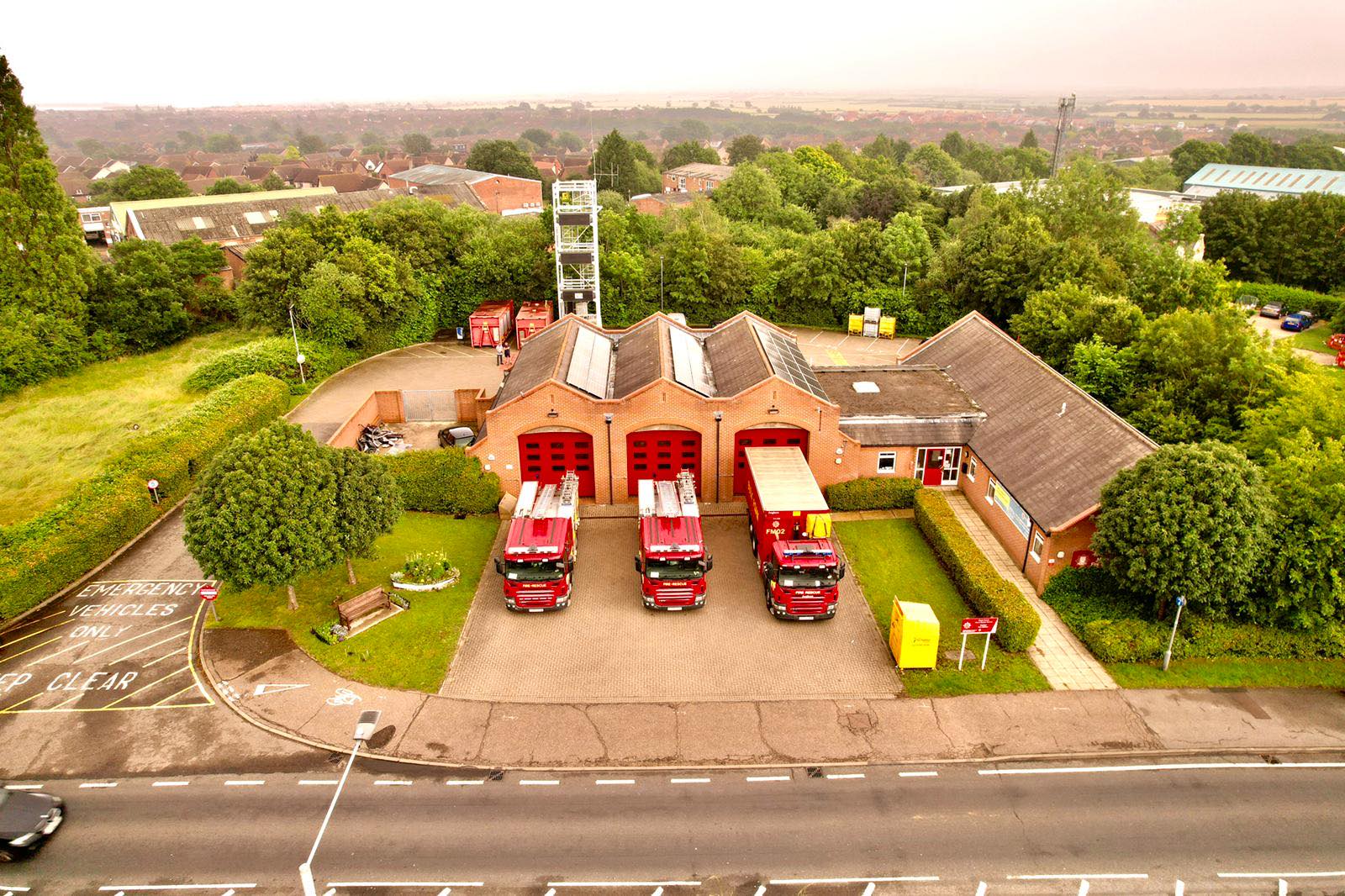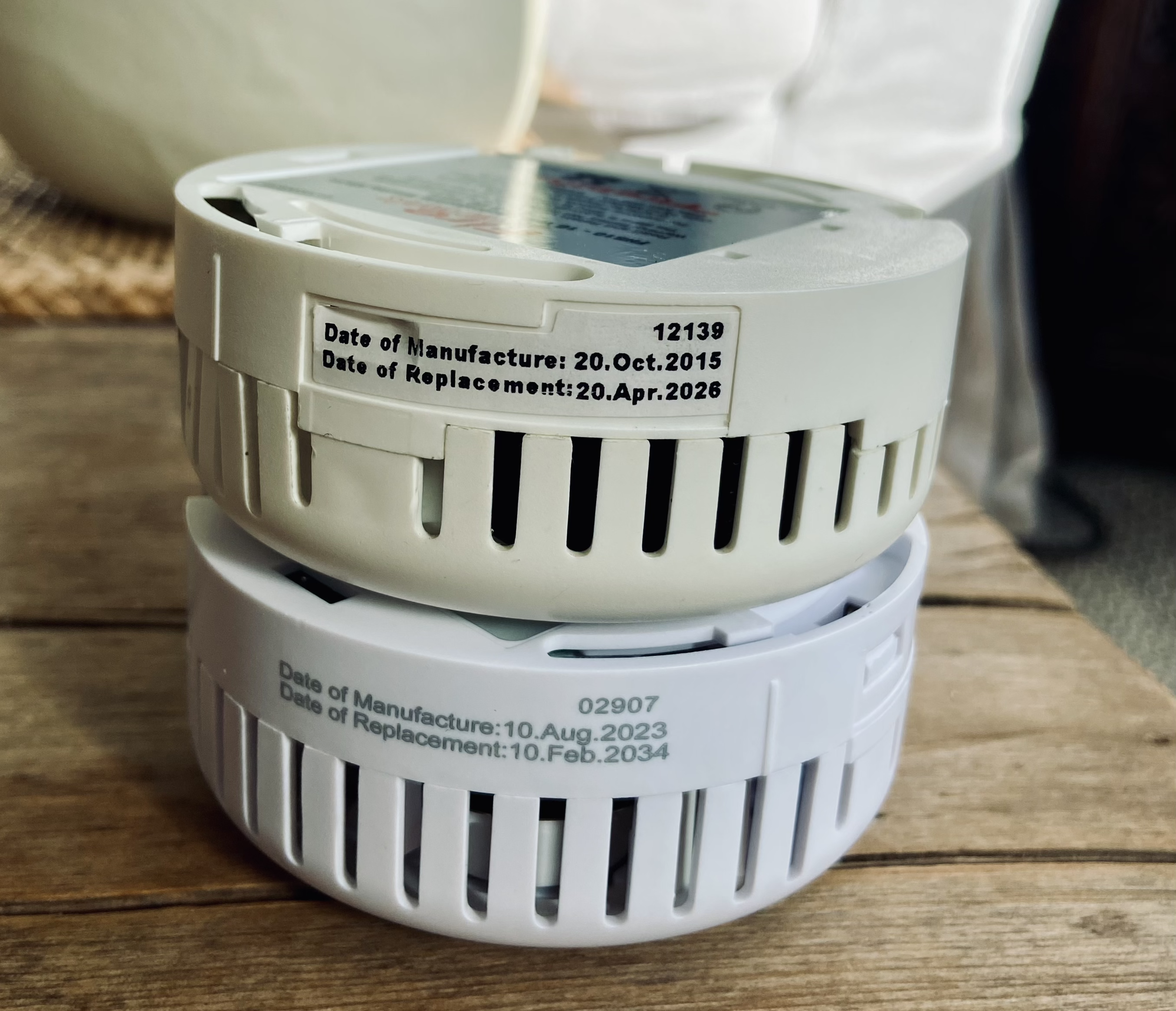Alf Norman: The Unsung Hero
A few months ago, the team at the Essex Fire Museum were very grateful to receive artefacts and documents relating to the late Fireman Percy Gulliver from his son. To receive information of this type was indeed a rare occurrence which prompted me to write an article about his war-time service with Chelmsford’s Auxiliary Fire Service (AFS) and later the National Fire Service (NFS). It isn’t often that lightning strikes twice but a chance conversation between a very good friend of mine and retired Royal Artillery para gunner John Norman at the 75th commemoration of the Battle of Arnhem in Holland proved that it can. During that conversation John told my pal that his father Alfred W Norman was Chief Fire Officer of the Chelmsford Borough Fire Brigade (CBFB) before the war. In turn, my pal told John that he had a good friend that was very interested in the CBFB and was a volunteer at the Essex Fire Museum based at Grays fire station. The connection was made and a visit to the museum was scheduled with two objectives: to show John around our fantastic museum and to gain a little more information about his father’s career in the fire service which proved to be very informative.
Alfred Walter Norman was born at Bulford in 1904. He started his fire-fighting career with the Horsebridge Fire Brigade, Whitstable, Kent.
In 1934 he joined the Chelmsford Borough Fire Brigade and quickly rose through the ranks becoming Second Officer in 1937 and Chief Officer in 1938 after Chief Officer Captain W.G. Whyte R.F.C., D.C.M., M.M. retired. This was about the time Percy Gulliver joined the brigade as a fireman. As the Chief Fire Officer, Alfred was entitled to live at Fire Station House on Threadneedle Street, close to the Brigade’s Market Road fire station in the centre of the town.
In 1938 it was strongly felt the war was imminent and that fire brigades throughout the land should be supported by auxiliaries, which lead to the formation of the Auxiliary Fire Service (AFS). It would have been Alfred’s responsibility to recruit and train these men and women and to transform them into a coherent fire fighting unit in a short space of time.
In October 1938 Chelmsford had 30 AFS personnel but required 200 between the ages of 25 to 50. In a recruitment drive, Alfred, plus eleven existing AFS firemen, toured Chelmsford on a fire engine towing a Home Office trailer pump. As a result a number of applications were received, though come December 1940 the two hundred target still had not been achieved. There was also a call for Fire Brigade reservists, men with previous experience of full-time firefighting, to sign up. (Chelmsford Chronicle, 14 October 1938). The photograph below shows the ‘recruitment party’ at Market Road fire station, note the megaphone in front of Chief Officer Norman which he used while touring the town’s streets.
Alongside recruiting for the AFS, Alf also undertook his everyday duties associated with the regular brigade. This was emphasised on 28 August 1938 when a serious fire started at a boarding house and shop known as the Corner House in Moulsham Street. It was a fire that provoked a good deal of anger amongst the populous and conversely admiration for the bravery shown by some of those involved.
Two lodgers, James Stanley, aged 70 - a labourer and James Hampton, aged 65 - an ice cream salesman rented attic bedrooms where sadly they were to perish. A dramatic account of the rescue attempt of Mr Hampton was published in the local press. It would seem that he managed to get out onto the roof but was overcome by the heat and the smoke. He was eventually rescued by PC John Rice and Chief Officer Norman who lowered him to the ground by a rope in a terrible state. He sadly died shortly afterwards in hospital. The rescue was assisted by Mr Hampton’s son who was heard to cry loudly, “He’s my father!” Although firemen exhibited great bravery throughout, the incident provoked much anger from the public for the way CBFB dealt with the fire. It was apparent that the Brigade’s Dodge tender arrived without a ladder and a long builder’s ladder had to be acquired which can be seen in the press cutting below. Indeed, images that exist show that the Dodge was inexplicably never fitted with a ladder of any description. A second fire engine stalled in Hall Street and had to be bump-started. It was also intimated that hoses were initially played on the lower level and not higher up where the lodgers were located. Alongside these, communication between the fire ground and Market Road fire station was lamentable. It was not one of the Brigade’s greatest endeavours, a sentiment endorsed by a number of very critical articles in the local press.
Notwithstanding the criticism four men who risked their lives at the fire were commended by the Mayor at a ceremony in December and were presented with bravery awards. Chief Officer A.W. Norman, CBFB and PC J. Rice, Essex Police, received the bronze medal of the Society for the Protection of Life from Fire. Mr W. McGregor - a lodger and Mr R. Slade, son of the proprietress, were awarded with the Society’s framed certificate and cheques for two guineas.
At the next major incident the Brigade equipped itself with distinction – lessons had been learned and taken on board. At around midnight on Tuesday 29 April 1939 a severe blaze broke out at the junction of the High Street and Springfield Road. The offices of the Chelmsford Employment Exchange and Mr Grovic’s large sack making factory at the rear were gutted. The Brigade, accompanied by the AFS, arrived promptly and was able to obtain a plentiful supply of water from the River Chelmer. Despite this, it was not long before the roof of the factory collapsed, spreading sparks over a wide area which ignited cardboard boxes piled high against the wall of the adjacent Woolworths. Quick thinking by a police officer climbed a ladder and pulled the boxes away from the shop wall, quite possible saving the store. Working with three fire engines and a trailer pump, it took the Brigade three hours to bring the blaze under control. Hundreds of thousands of sandbags were destroyed, but fortunately the Employment Exchange kept its records in a fireproof cabinet so were undamaged but staff were forced to move into temporary accommodation in the Springfield Parish Hall, opposite the Prison. The cause of the fire was unknown.
Britain declared war on Germany on 3 September 1939 and after the six month ‘phoney war’ Germany embarked on a prolonged campaign of aerial bombardment – the Blitz. At that time the AFS continued to be a supportive body to the CBFB prior to the nationalisation of fire services in 1941. To meet war- related threats a good deal of structural reorganisation and additional logistics had to be put into play very quickly. The strength of the AFS increased quickly from 78 personnel (of all ranks) to 107 including: eight officers, fourteen leading firemen, 76 auxiliary firemen, four male watch room attendants, one female watch room attendant and four messengers, by 25 November 1940. Alfred was in overall charge but the AFS was commanded by Commandant Harold Rankin who must have taken some of the weight off Alfred’s shoulders especially with three newly acquired auxiliary fire stations dotted around the borough plus a number of “satellite” stations situated on local farms.
In some ways the ‘phoney war’ was a frustrating period for fire fighting personnel they were geared up to fight fires in wartime scenarios. They were also pilloried at times by the general public, often accused of being draft dodgers, or worse, particularly the auxiliaries. However, in 1940 the Battle of Britain raged and the Luftwaffe had started its strategic bombing campaign, making certain that Chelmsford did not go by unpunished. This escalation of hostilities inevitably placed an enormous amount of extra responsibility on Alf’s shoulders. Even more pressure was placed on Alf’s shoulders when brigades – including the CBFB - were drafted in to fight major fires outside their normal operational areas. These fires were exclusively a result of prolonged Luftwaffe bombing raids on specific targets. One of these ‘out of area’ fires occurred in September 1940 when the massive oil refinery at Thames Haven was attacked by the Luftwaffe and a number of huge oil storage tanks were set alight. Members of the Chelmsford Fire Brigade and Chelmsford’s AFS were drafted in to work on the resulting blaze. As a result of valiant work on top of a blazing storage tank, Sub-officer Joseph Warren and Leading Fireman Frederick Keen were awarded the British Empire Medal. Both men joined the regular brigade after the war, with Frederick going on to become proprietor of Keen Menswear a well-known Chelmsford gentleman’s outfitters at the time, which he acquired for £500 in 1949. Chief Officer Norman and Leading Fireman Youell received His Majesty’s commendation for gallant conduct on the same occasion. The Home Secretary, Mr Herbert Morrison, also praised the work the lads from Chelmsford had done at Thames Haven.
A good deal of the CBFB’s equipment was lost fighting these fires but it was vital to quickly replace it because the brigade would be needed to reinforce the London Fire Brigade (LFB) during the 1940 London Blitz when the capital had over 18,000 tons of bombs dropped in 71 major bombing raids. It would seem that Alf and the Chelmsford brigade regularly relieved LFB crews. They would initially be dispatched to Stratford, which served as a collecting station; from there they would be sent to wherever they might be needed. It is very likely he and his men would have been included in the mobilisation of an Essex AFS column which was urgently despatched on the night of 10/11 May 1941 to London at a request from London Fire Control. To receive such a request indicted that London was up against it, and the Essex lads had no conception of what they were about to experience on that fateful night.
A number of pumps were despatched from the Benfleet Volunteer Fire Brigade, Hadleigh and we are fortunate to have a very graphic account of what leading fireman Nobby Clark (and any other firemen) went through on that night, a small part of which is recounted below:
“I looked along the street and saw other pumps at work, including a turntable ladder working at about 100ft at the far end of the Salvation Army building which was well alight on all floors. We heard aircraft coming and soon after bombs fell around, starting more fires... . Then I noticed all the jets along Queen Victoria Street start to dry up. ... Suddenly the whole front of the burning Salvation Army building collapsed into the street, completely blocking the road. The turntable ladder was still standing erect, surrounded by a heap of rubble. Many firemen ran towards the scene and started getting injured fire-fighters out of the chaos. All my hoses were buried under red-hot rubble. ... The heat was terrible and I soon felt dazed and giddy and was violently sick. I seemed unable to think and felt the strange urge to walk towards the heat ... the rest of the crew said that they had felt much the same.
This raid was one of the most destructive of the war which necessitated Essex firefighters being at the scene for over twenty hours. Once home they were able to grab something to eat and get some sleep at their respective fire stations. They would, however, be back in their convoy just ten hours later.
Alf’s days as chief officer of the CBFB were soon to end, as were most chief officers. In 1941 the government took the pragmatic view to amalgamate local authority brigades and the AFS, effectively nationalising the nation’s fire services, and on 18 August of that year the National Fire Service (NFS) was established and the CBFB was abolished, never to reappear. Nationalisation allowed standardisation of equipment, improved training and the ability to draw in reinforcements to hard-hit blitzed cities often from many miles away. The country was divided into 43 operational units known as Fire Forces which in turn were split into divisions. Chelmsford formed part of Fire Force Area No 11 with its headquarters at Southend and Alf was to play a significant part in the formation as a column officer, the equivalent rank to a superintendent of police. He was stationed at Colchester and resided with his family at Frinton-on-Sea and was entitled to a staff car.
Little is known specifically of what Alf did during his time in the NFS but as a column officer his duties would have been significant and extensive.
As alluded to earlier, the NFS resulted in the demise of the vast majority of local brigades, such as the Chelmsford Borough Fire Brigade. In 1948, an act of parliament placed fire brigades under local authority control thus establishing the Essex County Fire Brigade (ECFB). However, the county boroughs of Southend, West Ham and East Ham at that time still maintained their own fire brigades, though they were later subsumed by larger authorities.
This major restructuring of fire brigades did not deter Alf and he joined the fledgling Essex brigade. His wartime rank would quite possibly have paved the way for an equivalent, if not a higher position in the brigade, but he liked fighting fires so a desk job was not for him. He and his family moved to Hornchurch fire station where he became station officer. This was not an uneventful posting. A serious fire broke out at the nearby Roneo factory and a fire engine was despatched. Unfortunately on its way to the fire the machine overturned caught fire. Alf was seriously injured and one of his colleagues was killed. Not all “shouts” Alf attended were devoid of humour. At one such “shout” a large crowd had gathered at a large fire, an inexperienced young fireman was clearly unsure what to do. Seeing that the lad was struggling Alf issued a very direct order in his direction – “Get a hose out and throw water about for the audience!”
For a short time Alf was posted to Grays fire station. Being close to the docks it was not unusual for Grays to attend ship fires. On one such occasion, in January 1963, Alf was injured again in the line of duty when he fell between two ships in the dock, luckily the water level was relatively low and he was able to be extracted by his men.
After a long and distinguished career in the fire brigade, he retired from the service in June 1963.
At the age of 58 Alf was not ready to retire permanently though and he secured a job in the post room at Ford in Dagenham. At that time, Ford had a relatively large and active works fire brigade. The temptation for Alf to get involved was too much for him and he applied to join the brigade but was turned down. Unfortunately we are unsure why as it would have been interesting to know. Not to be deterred by this, Alf continued to work at Ford Dagenham until his retirement in the late 1960s.
Sadly on 18 October, 1986, aged 82, Chief Officer Alfred Walter Norman Chelmsford Borough Fire brigade, a modest and distinguish hero, journeyed to his final shout at Harold Wood hospital.
By Mick Ford - Essex Fire Museum


